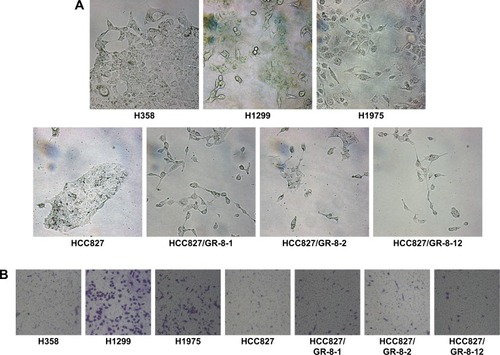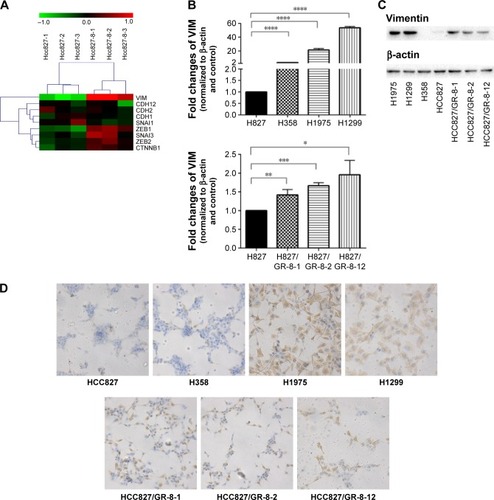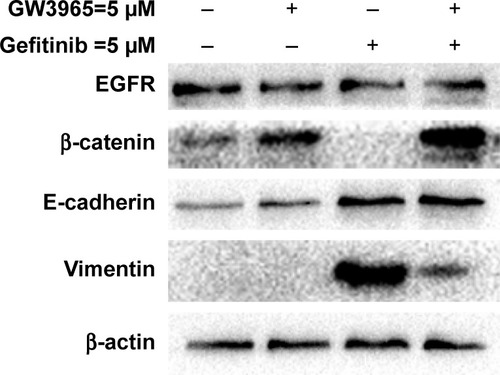Figures & data
Table 1 Primer sequences for amplification of the genes encoding β-actin and vimentin
Table 2 Gefitinib IC50 values of H1975, H1299, H358, HCC827, HCC827/GR-8-1, HCC827/GR-8-2, and HCC827/GR-8-12 cell lines
Figure 1 Morphologic differences of NSCLC cell lines.
Abbreviations: EMT, epithelial-to-mesenchymal transition; GR, gefitinib-resistant; NSCLC, non-small cell lung cancer.

Figure 2 Among the genes analyzed, nine of those differentially expressed are known to influence EMT.
Abbreviations: EMT, epithelial-to-mesenchymal transition; GR, gefitinib-resistant; RT-PCR, real-time polymerase chain reaction; VIM, vimentin.

Figure 3 Western blots demonstrating that the GR cell line, HCC827/GR-8-1, demonstrated markedly increased levels of vimentin, and that treatment with gefitinib led to the complete absence of β-catenin protein expression.
Abbreviations: EGFR, epidermal growth factor receptor; GR, gefitinib-resistant.

